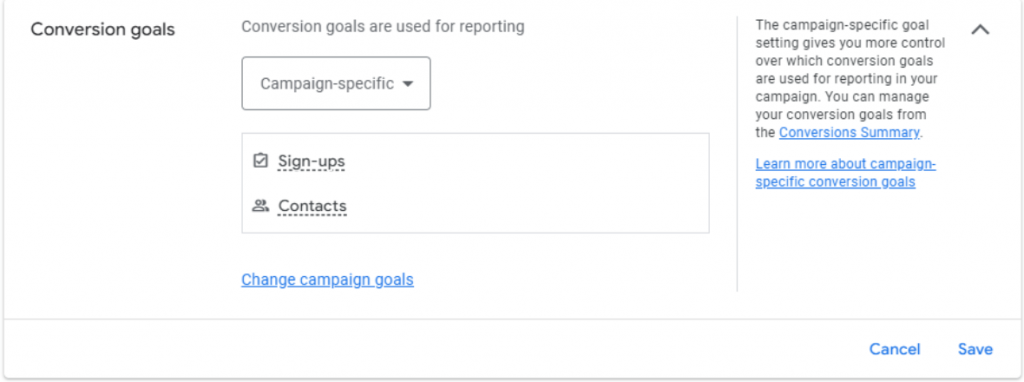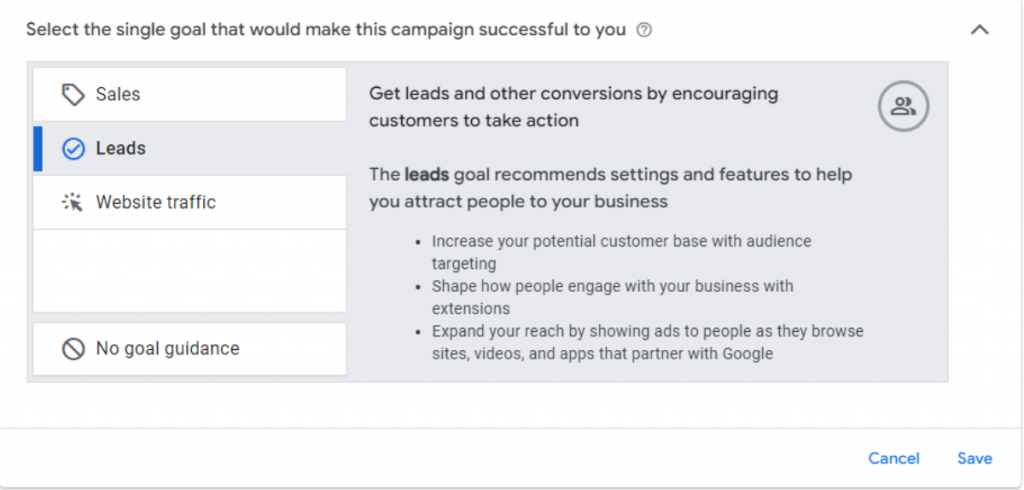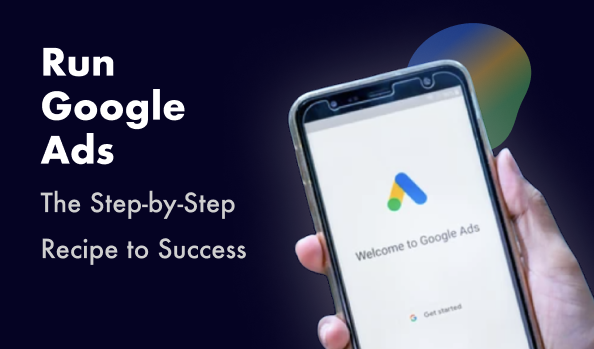Introduction
Campaign settings play a crucial role in the performance of your Google Search Ads. Proper configuration ensures that your ads reach the right audience, use budget efficiently, and align with your goals. In this post, we’ll walk through essential campaign settings and share recommendations to avoid common mistakes and optimize performance.
Campaign Name
A structured naming convention simplifies campaign management. Each campaign name should include:
- Project name
- Campaign type
- Target location
- Category or product
Example:
Optimyzee_Search_USA_Optimization tools
This approach helps you quickly identify campaigns and keep things organized.

Conversion Goals
By default, Google Ads uses account-level goals, tracking every action marked as “Primary” in your account. However, not all goals may be relevant to every campaign.
Recommendation:
- Switch to Campaign-specific goals to select only the relevant conversion goals, ensuring that the campaign optimizes for the most meaningful actions.

Customer Acquisition
The default setting “Bid equally for new and existing customers” ensures that both returning visitors and first-time users see your ads.
Recommendation:
Keep the default setting, as users often visit your site multiple times before converting. However, if your goal is to acquire only new customers, switch to “Optimize campaign for acquiring new customers.”

Marketing Objective
Although not critical, selecting the appropriate objective aligns your campaign with your overall strategy:
- Sales: For e-commerce stores aiming to drive purchases.
- Leads: For collecting form submissions, registrations, or sign-ups.
- Website Traffic: When the goal is to increase visits without a specific action.
- No goal guidance: Use this option if you’re unsure or testing new campaigns.

Networks
Proper network settings are critical to controlling where your ads appear.
Recommendation:
- Disable Display Network in search campaigns to avoid irrelevant traffic and ensure cleaner data. Use a separate Display campaign if you want to run banner ads.
- Search Partners: Disable “Include Google search partners” unless their performance is monitored through segment reports. If they underperform, it’s best to turn them off.

Locations
Location targeting is simple but must be carefully managed.
- Tip 1: Target one country per campaign to avoid mixing keywords and CPC rates, which vary by region.
- Tip 2: Avoid overly narrow targeting with radius settings. Check the population size Google identifies within the selected radius to ensure sufficient audience reach.
- Location Options: Use “Presence: People in or regularly in your included locations” to target only users in the selected location, not those merely expressing interest in it.

Languages
Select one language per campaign to ensure that keywords and ad copy align with the audience’s language. This improves engagement and prevents potential customers from skipping your ads due to language mismatches.

Budget
While campaign budgeting deserves a dedicated post, here are some quick tips:
- Daily Budget: Google distributes your daily budget across the month, meaning it might spend more or less on certain days.
- Start Small: Set a low budget (e.g., $10) initially. Once the campaign activates, raise the budget to your desired level.
- Budget Rule: Align your daily budget with your target CPA. If your CPA is $100, the budget should be at least $100 to generate meaningful results.

Bidding
Choosing the right bidding strategy is crucial for campaign performance.
- Manual CPC: Start with Manual CPC for greater control during the early stages.
- Smart Bidding: After 10-30 conversions, switch to Maximize Conversions or Maximize Conversion Value to optimize based on campaign data.
- Maximize Clicks: Use only if the campaign struggles to get impressions or clicks.
- Avoid Impression Share strategies, as they rarely provide meaningful value.

Automatically Created Assets
Always disable automatically created assets to maintain control over your ad content. This prevents Google from generating ads that may not align with your strategy or messaging.

Start and End Dates
These settings are ideal for seasonal campaigns or promotions. For example, a Black Friday campaign should have specific start and end dates to avoid running beyond the intended timeframe.

Broad Match Keywords
Avoid broad match keywords to maintain precise control over search queries. Instead, use phrase or exact match to target relevant queries more effectively.

Ad Rotation
Leave Ad Rotation as it is. The default setting ensures Google prioritizes the best-performing ads, which maximizes campaign effectiveness.

Campaign URL Options
Add UTM parameters at the campaign level to track performance more effectively.
Example:
{lpurl}?utm_source=google&utm_medium=cpc&utm_campaign=campaign_name&utm_term={keyword}

Dynamic Search Ads Setting
Dynamic Search Ads (DSA) should only be used in dedicated campaigns. Avoid enabling DSA in standard search campaigns to maintain full control over targeting and ad copy.

Conclusion
Setting up Google Search campaigns correctly ensures you reach your target audience efficiently and control costs effectively. By following these best practices—such as choosing the right locations, budgets, and bidding strategies—you can avoid common mistakes and maximize your ROI.
Explore more insights in our How to Run Google Ads post, and take your campaigns to the next level with Optimyzee’s automation tools.












